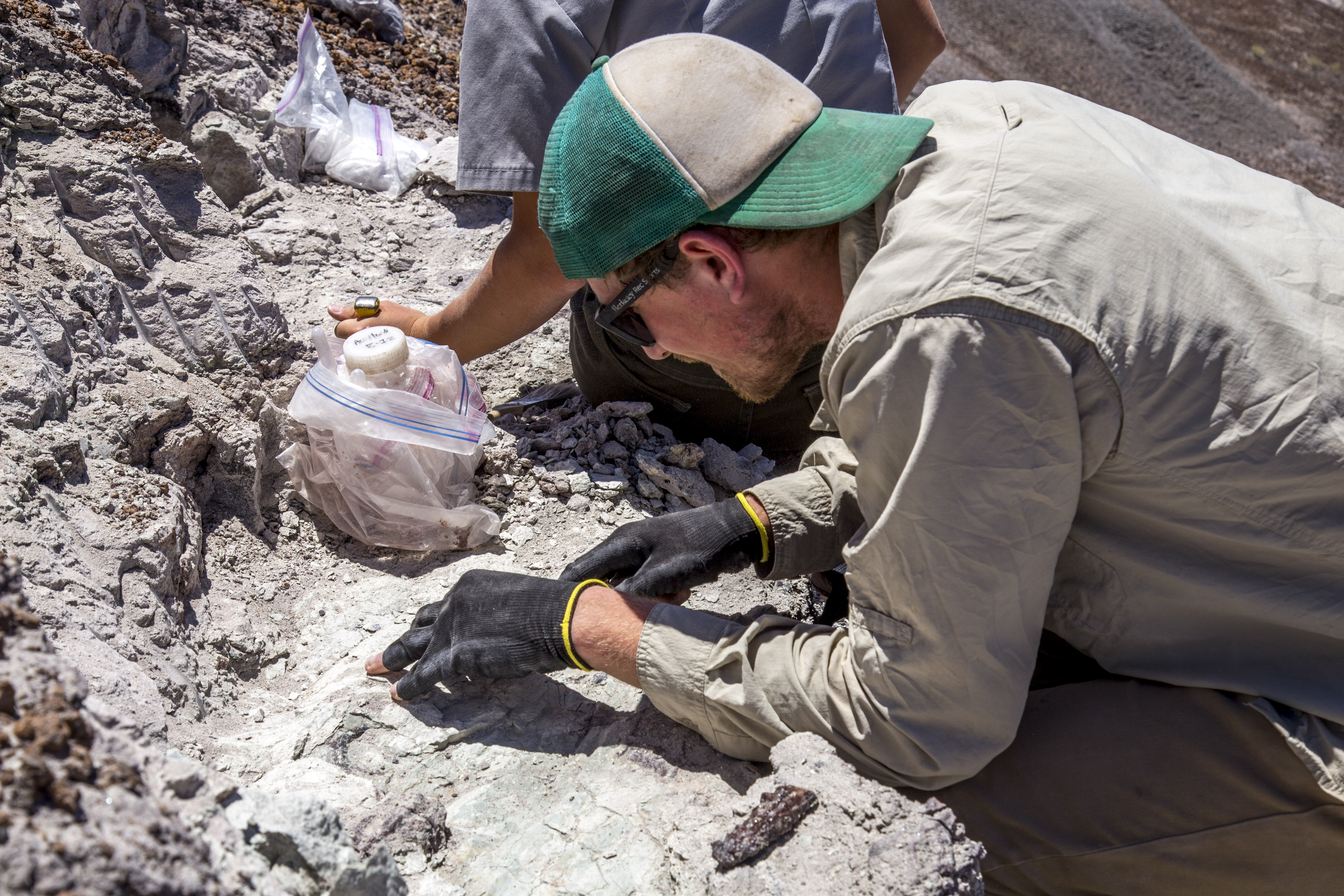News Release

NPSPHOTO/Jake Holgerson
|
Subscribe
|
Contact: Dr. Adam Marsh, (928) 524-6228 x263
Petrified Forest, AZ – Petrified Forest National Park (PEFO) has served as a natural laboratory for research in Late Triassic paleontology and geology for nearly 100 years. With its vast exposures of the fossil rich Chinle Formation, PEFO offers unrivaled paleobiological discoveries used to test a variety of hypotheses. A recently funded National Science Foundation CAREER project led by Virginia Tech aims to synthesize old and new discoveries to better understand the evolution of ancient animal communities through time, including the earliest members of modern groups like lizards, crocodilians, mammals, and turtles.
Dr. Sterling Nesbitt, along with his collaborators Dr. Michelle Stocker, Ph.D. candidate Ben Kligman (Virginia Tech), Petrified Forest Chief Scientist Dr. William Parker, and Lead Paleontologist Dr. Adam Marsh, will be using large animal and nearly microscopic fossils of Triassic animals (animals under 20 inches in length, typically referred to as microvertebrates) to compare animal communities through 20 million years of the latest Triassic Period (220 million years ago to 200 million years ago). The team will reconstruct the ecosystem roles, body-size, and piece together how these Triassic animals are related to each other as well as modern counterparts. Furthermore, the team will search for and excavate new fossil sites within and around PEFO. When tiny fossils are recovered using new techniques partially developed at PEFO, they will reconstruct the bone structure virtually with lasers and X-rays, and 3D print the bones to better understand their anatomy and incorporate them into museum exhibits and teacher kits. Nesbitt says that along with the paleontological science already happening at PEFO his project, “will be scientifically adding to the extensive body of knowledge of vertebrate evolution over 20 million years of the Triassic in one area” in order to assess whether land animal communities are stable or change over millions of years.
Stocker and Kligman are eager to continue their partnership with the park and develop a collaborative program of world-class science. According to Stocker, Petrified Forest is “the best place to study the Triassic in the world” because it has the “rock record and the fossil record to answer the questions we’re wanting to ask.” Kligman points out, “the collaboration between Petrified Forest National Park and Virginia Tech includes important scientific research for all those involved from park scientists to Virginia Tech professors to undergraduates, as well as outreach to the local communities in Arizona and Virginia.” Stocker (2003-2007) and Kligman (2014-2020) were both paleontology interns and seasonal employees at PEFO, and Nesbitt has been working in the park since 2003. The paleontology intern program at the park, funded by the Petrified Forest Museum Association and the Friends of Petrified Forest National Park along with a previous grant awarded to Stocker and Nesbitt by the David B. Jones Foundation, is a hallmark of the science that occurs at PEFO and has produced more than 50 peer-reviewed scientific articles in the last decade.
This $622,222 five-year project will fund graduate student research, bring undergraduates to PEFO for fieldwork and training, and provide four week-long field courses for K-12 teachers from Arizona, New Mexico, and local tribal communities that integrate laboratory research with outreach and teaching opportunities. Understanding the fossil communities from the Late Triassic at Petrified Forest will incorporate new technologies, ignite scientific curiosity in students and interns, and foster a dialogue with local teachers on how to communicate the science of paleontology in one of our country’s oldest national parks.
Link to Virginia Tech press release: https://vtnews.vt.edu/articles/2020/07/science-sterling_nesbitt_nsf_career_petrified_forest.html
Last updated: September 21, 2020
